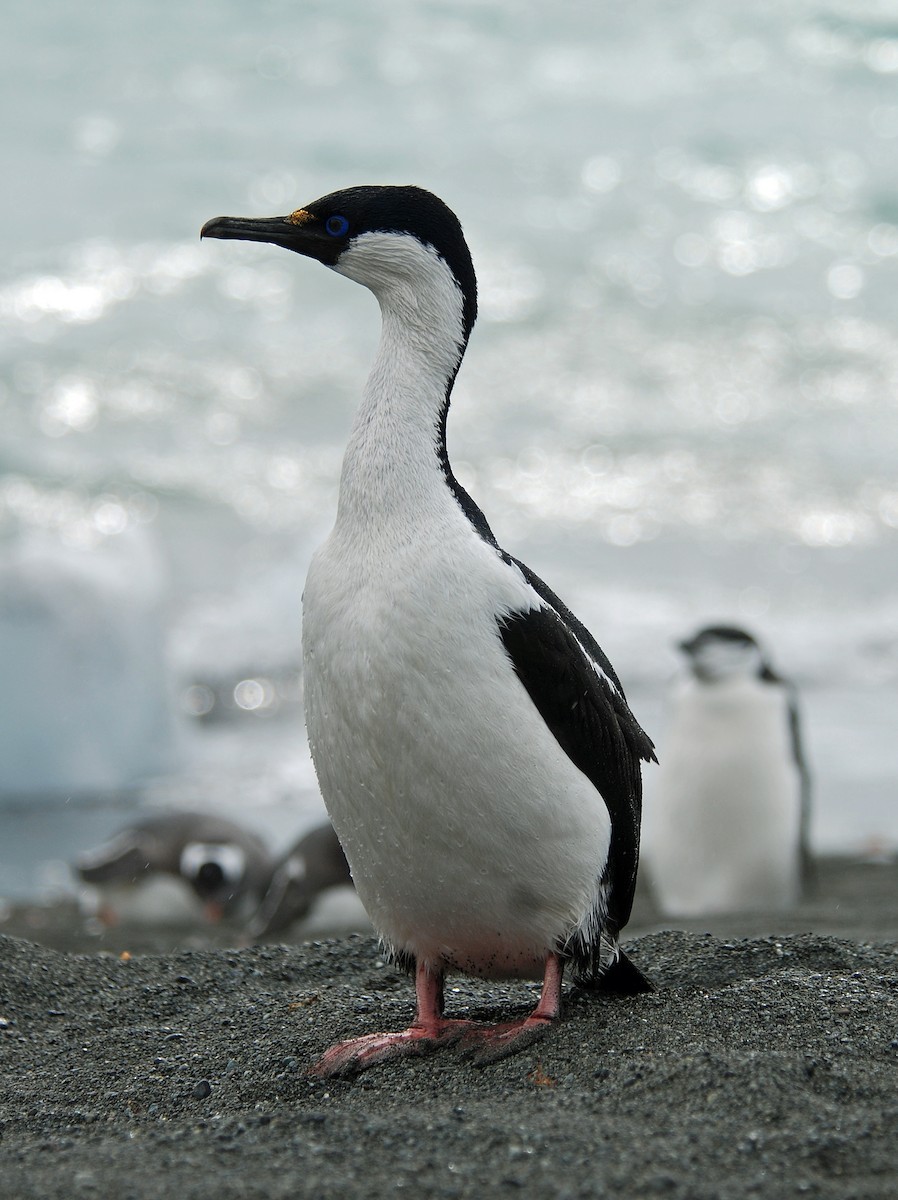Antarctic Shag
A species of Cormorant Scientific name : Leucocarbo bransfieldensis Genus : Cormorant
Antarctic Shag, A species of Cormorant
Botanical name: Leucocarbo bransfieldensis
Genus: Cormorant
Content
Description General Info
 Photo By Nigel Voaden
Photo By Nigel Voaden Description
The adult Antarctic shag is about 75–77 cm tall, has a wingspan of 124 cm, and weighs 1.5-3.5 kg. When looking at individuals within this species, the most defining characteristic is the warty yellow caruncle found on the forehead. Additionally, the blue "eye", which is actually blue skin surrounding the eye, is a distinct trait that stands out. The head, wings, and outside of the thighs are black. While the underparts and central back are white. White is also found on the wing bars that line the upper wing. The bill is dark ranging from brown to yellow. As the bill hooks, the lower mandible becomes lighter. The species has naked pink webbed feet and large black claws. The wings of this species are extremely strong and are powerful in flight with continuous wingbeats disrupted by some gliding. It is estimated that flight speed can reach 50 km per hour. Juveniles are duller and browner than adults. They don't usually have the warty caruncle or white patch on their back. Males and female look very similar but can be distinguished by size. Males are larger than females in size and are also larger-billed. 
Size
77 cm
Nest Placement
Cliff
Feeding Habits
Antarctic Shag primarily consume demersal fish, obtained through deep diving that connects benthic and pelagic food webs. Feeding behavior includes foraging at ocean floors, with little ecosystem impact due to limited population.
Habitat
The antarctic Shag predominantly resides in marine environments, favoring coastal regions and nearby islands. These birds are closely associated with icy habitats, often found near pack ice. Their breeding grounds are characteristically rocky, utilizing a variety of substrates including coastal cliffs, slopes, and even level terrain on isolated islets and sea stacks.
Dite type
Piscivorous
General Info
Feeding Habits
Bird food type
Distribution Area
Currently, the Antarctic shag is found on the Antarctic Peninsula, South Shetland Islands, and Elephant Island. The Antarctic shag is described as a marine species staying near the shores of coastal regions and some islands. Additionally, colonies are usually found near packed ice. During the breeding season, breeding colonies are found on cliffs, rocky slopes, outcrops and sometimes even flat coasts or islets. This species is sedentary and doesn't migrate. However, a single Antarctic shag was found dead in Bahia, Brazil in 2002; it had previously been ringed in the South Shetland Islands. Colonies may move short distances to find waters that aren't frozen in order to feed. This short move most likely occurs during winter months when ice starts to spread and cover the ocean where the birds feed. 
Species Status
The current population of the Antarctic shag is stable, with a estimated 20,000 individuals worldwide. Currently there is no particular threat that could hurt the community or population size. It is very hard to estimate the population of species in isolated areas, such as the Antarctic. Still, recent studies using Unmanned Aerial Vehicles (UAV) have allowed scientists to estimate Antarctic shag populations by taking images of colonies. Since this data is based on images, more can also be learned about topography, habitat selection and nesting. In the future, this might allow scientists to more precisely estimate population size. In 2018, a study found that 3.5% of the global Antarctic shag population breeds in Ryder Bay. The study also calls for greater protections of the area. 

 Photo By Nigel Voaden
Photo By Nigel Voaden Scientific Classification
Phylum
Chordates Class
Birds Order
Gannets and Relatives Family
Cormorants Genus
Cormorant Species
Antarctic Shag